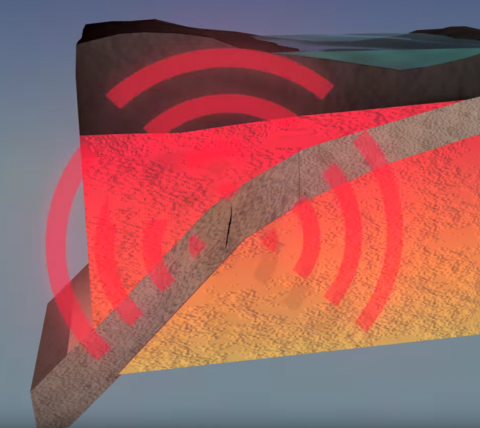Most people can visualize how earthquakes are generated at plate boundaries, where one plate grinds against or collides with another. It is harder to describe events like the magnitude 7.1 Iniskin Earthquake, which occurred inside a tectonic plate.
Our technical description of the source of the Iniskin quake would be something like, "The faulting type of this earthquake is consistent with down dip extension of the Pacific Plate as it is pulled into the mantle under its own weight." But what does that look like?
Thanks to Geophysical Institute digital illustrator Hannah Foss, now we can show you. The image at right is a screenshot from her clarifying new animation showing how the downgoing slab can rupture and generate a large earthquake.
While the largest earthquakes occur on the plate interface, large intraplate earthquakes of this type are not uncommon. In fact, the last four significant earthquakes felt in Anchorage were generated in this way. The Iniskin quake was the largest, but the M6.3 Skwentna Earthquake (2014), M6.4 Iliamna Earthquake (2015), and M6.8 Sutwik Island Earthquake (2015) all occurred inside the subducting slab.







